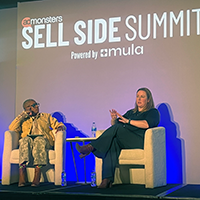Blending Experiences With Strategy
Experiences and events are useful on their own, but they are also catalysts that take initiatives from other channels to new heights, giving physical form to messages other media can only communicate from a distance. Follow these steps to integrate experiential marketing into a larger business strategy and put your brand face-to-face with its target audience.
1. Build long-term customer connections.
Encourage consumers to dive deeper into what makes your company special. How does your interactive experience encourage better customer relationships, and how do those relationships extend beyond the event?
Use live experiences to build emotional connections, then extend those connections to social media campaigns. Promote videos and fan-made content from the event. Follow up with people who gave their information at the experience by thanking them with personalized communications and inviting them to interact further.
2. Capture and measure better data.
Customers have good ideas, but very few send cold emails to companies that express how they feel. Use events to solicit customer feedback on likes, dislikes and unaddressed pain points, then combine that data with existing information to create products people want and content they will stop to view.
Add event information to customer profiles and track response rates to discover which strategies, content pieces, and channels provide the highest ROI. When events complement existing marketing initiatives, everyone benefits.
3. Combine channels to maximize impact.
Effective experiential campaigns don’t end when the event is over, nor do they begin on the day of the event. Lead up to experiences with teasers to build hype, cover the event on social media as it happens, then use content developed at the event to drive current campaigns and lead into new ones.
According to Aspect, businesses with omnichannel strategies enjoy customer retention rates 91 percent higher than their competitors. Consumers love to see their experiences (and the authentic experiences of others) spread online. Bring the content to the customer on every channel possible by using event information and content to personalize the experience and keep prospects moving down the funnel.
The ROI of experiential marketing might be harder to prove than the ROI of Facebook ads, but that’s not because events don’t drive engagement. Experiences provide unique opportunities to collect customer data, increase brand visibility, and boost the effectiveness of other campaigns.
Brett Hyman is the president of NVE Experience Agency.
Related articles:
How to Take Your Experiential Marketing to the Next Level
The Differences Between Brand Experience, Experiential and Events



